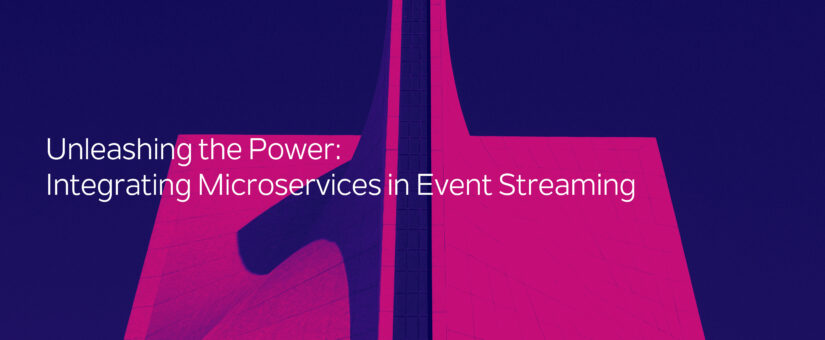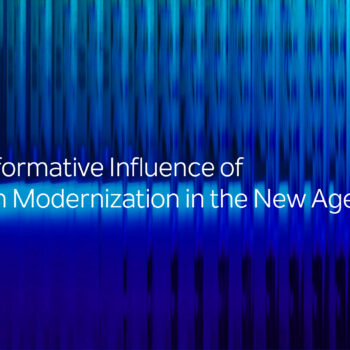
Unleashing the Power: Integrating Microservices in Event Streaming
- Posted by Adham Jan
- On October 4, 2023
Introduction:
In the realm of modern software development, two concepts have gained significant traction: microservices architecture and event-driven architecture. Microservices have revolutionized the way we build and deploy applications, while event streaming has become the backbone for real-time data processing and communication. In this blog, we will explore the integration of microservices in event streaming and delve into the benefits and challenges it presents.
- Understanding Microservices Architecture:
Microservices architecture is an architectural style that structures an application as a collection of small, loosely coupled services, each running in its own process and communicating via lightweight mechanisms. It promotes scalability, maintainability, and independent deployment of services. Microservices enable teams to develop and evolve different parts of an application independently, making it easier to scale and adapt to changing requirements. - Embracing Event-Driven Architecture:
Event-driven architecture (EDA) is an architectural pattern in which the flow of the system is driven by events. Events represent meaningful occurrences or changes in the system’s state and can be consumed and processed by interested parties. EDA enables loose coupling, scalability, and responsiveness to real-time events. It is widely used in domains such as IoT, finance, and e-commerce. - The Synergy: Integrating Microservices and Event Streaming:
When microservices and event streaming come together, they form a powerful synergy. Microservices can be designed to produce and consume events, leveraging the benefits of event-driven architecture. Here are some key points to consider when integrating microservices in event streaming:a. Event Sourcing and CQRS: Event sourcing is a technique where the state of an application is derived by replaying events that have occurred. By adopting event sourcing and the Command-Query Responsibility Segregation (CQRS) pattern, microservices can emit and consume events, enabling data consistency and enabling scalability.b. Asynchronous Communication: Microservices can communicate with each other asynchronously through events. This decoupling allows services to evolve independently, enables fault tolerance, and facilitates scalability. Additionally, event-driven communication simplifies the integration of new services into the system without disrupting existing components.
c. Event Streaming Platforms: To implement event-driven microservices, organizations often utilize event streaming platforms like Apache Kafka or RabbitMQ. These platforms provide a reliable and scalable infrastructure for streaming events, ensuring data integrity and fault tolerance. They also offer features like event replay, event partitioning, and event-driven workflows.
- Benefits of Integrating Microservices in Event Streaming:
The integration of microservices in event streaming brings several advantages:a. Scalability: Microservices can scale independently by adding or removing instances as per the event load. Event streaming platforms handle the distribution of events across services, ensuring efficient utilization of resources.b. Resilience: Event-driven architectures are inherently resilient to failures. Even if a service goes down temporarily, it can recover and continue processing events when it comes back online. The decoupled nature of microservices ensures that the failure of one service doesn’t impact the entire system.
c. Flexibility and Agility: Microservices combined with event streaming enable organizations to quickly adapt to changing business requirements. New services can be added or modified without disrupting the existing architecture, allowing for rapid iterations and innovation.
d. Real-time Insights: Event streaming facilitates real-time data processing, enabling organizations to gain valuable insights from events as they happen. This real-time processing can power use cases such as fraud detection, personalized recommendations, and predictive analytics.
- Challenges and Considerations:
While integrating microservices in event streaming offers numerous benefits, there are some challenges to be aware of:a. Data Consistency: Ensuring data consistency across microservices can be complex when dealing with events. Proper handling of events, event ordering, and idempotent processing are crucial to maintaining data integrity.b. Event Choreography vs. Orchestration: Organizations need to choose between event choreography and orchestration patterns. Event choreography relies on events to coordinate microservices, while orchestration employs a central component to control the flow. The choice depends on the nature of the system and the level of coordination required.
c. Event Versioning and Evolution: As the system evolves, events may undergo changes. Proper versioning and evolution strategies must be in place to ensure backward compatibility and smooth transitions.
Conclusion:
The integration of microservices in event streaming unlocks a world of possibilities for building scalable, flexible, and real-time systems. By embracing event-driven architectures and leveraging event streaming platforms, organizations can create resilient, responsive, and highly adaptable systems that can drive innovation and provide real-time insights. While challenges exist, careful consideration of data consistency, event choreography, and versioning can help overcome these hurdles. Embrace the power of microservices and event streaming, and unlock new horizons in your software development journey.




